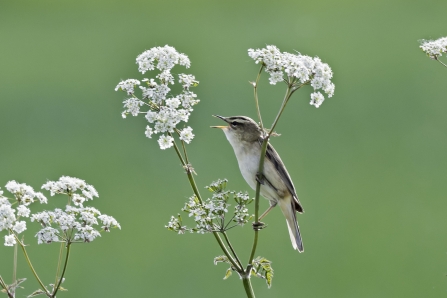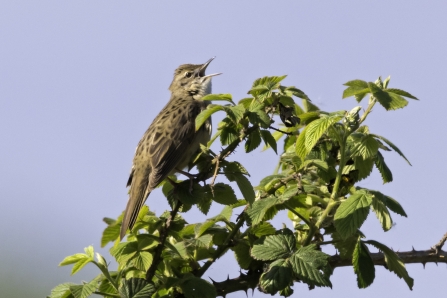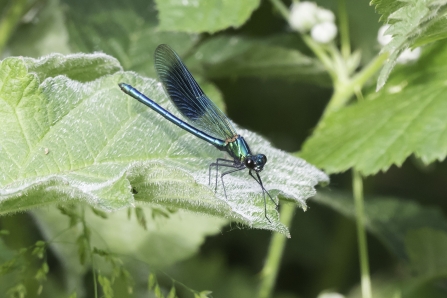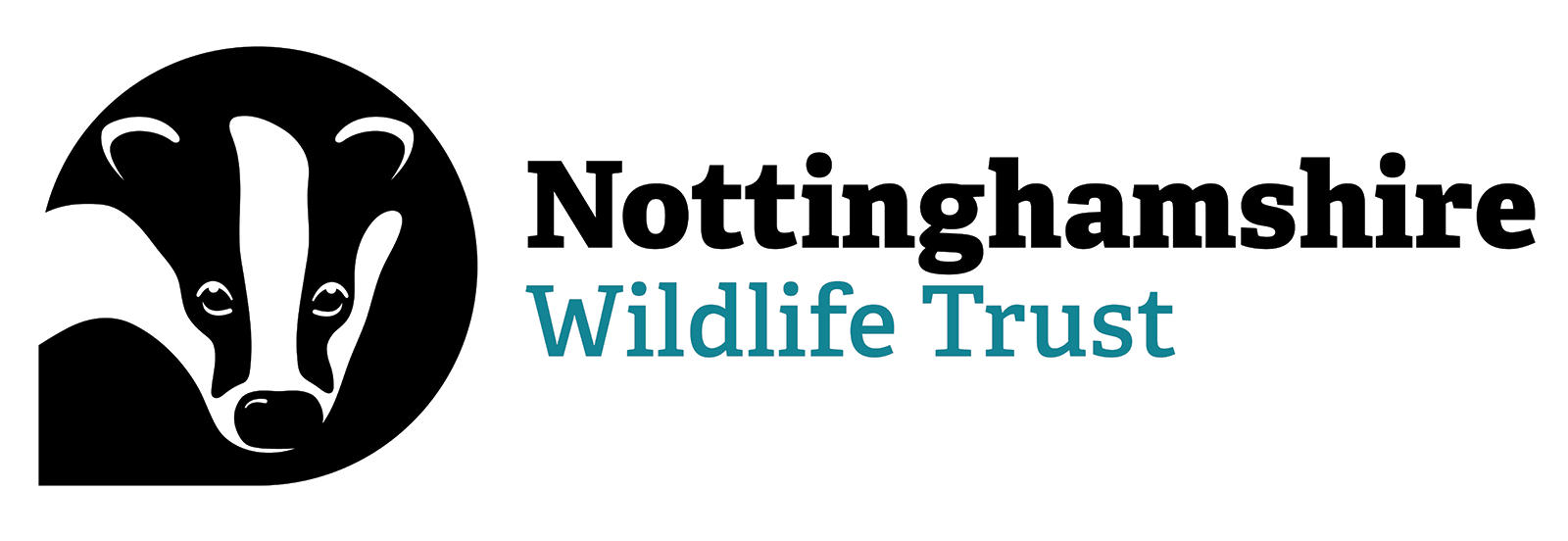As a semi-retired optometrist the advent of the COVID pandemic has meant, as it has for many, work has largely been replaced by lots of spare time. Unlike a lot of people though, my wife and I enjoy the luxury of a large garden and, even better, an extensive nature reserve on our doorstep. The Idle Valley Nature Reserve which is also an SSSI (Site of Special Scientific Interest) has proved to be a real tonic for us and many other local people. It demonstrates just how important the natural environment is for our physical health, but even more essentially, for a persons mental wellbeing. It's long been known that a measurable improvement in a patient's recovery from illness is found in those whose hospital room allows a view of trees and green spaces.

Sedge Warbler - Photo by Mike Vickers
Visiting the reserve on most days as part of my exercise routine, either on foot or on a mountain bike, but always armed with my camera and my trusty little 500mm lens gave me the opportunity to enjoy and record the wealth of wildlife on our doorstep in the usually glorious spring weather. It allowed me to indulge in my passion for wildlife photography and lifelong love of natural history, practically unabated. These daily, early morning or late evening outings allowed my wife and I to notice the gradual changes in the natural habitat unfolding before our senses. For example, the increase in bird numbers and species as March, April and May progressed. At first chiffchaff, sand martin and wheatear were gradually followed by other warblers (we have 8 species here), chats, swallows, waders, swifts, gulls and terns, either passage migrants or staying to establish breeding territories. Birds of prey also use the reserve and it was graced in spring, as in every year, by red kites, hobbies and osprey to name but a few. One lucky observer even managed to see a young white-tailed eagle flying over.
Don't get me wrong, I've not suddenly taken up wildlife photography I'd be doing this anyway but in the past it would have more usually been on a foreign trip or a visit to a national park in Scotland, or an East Anglian nature reserve or whatever. Lockdown has meant that I've been forced to concentrate on the minutiae of local nature, and no bad thing too.

Cormorant in Breeding Plumage - Photo © Mike Vickers
All of this makes one really appreciate the importance of local nature reserves. The starkness of the wider countryside with its intensive farming driven by our demand for ever cheaper food (often undervalued by consumers and thrown away) and the power of the agri-chemical industry reveals the cost of this is massively damaged ecosystems and an alarming loss of biodiversity. It has been really comforting to see how many other people have been enjoying, or at least taking solace in, this Notts Wildlife Trust Reserve and if they're not already members I would urge them to join as these places rely on private funding and people's generosity in order to function. We really need to cherish what is left of our natural heritage.
For those interested in taking up the satisfying pursuit of nature photography, I would advise that you adopt a similar approach to me and opt for the use of a 300mm to 500mm lens or a bridge camera with even more reach but perhaps less quality. For those with deep pockets there's also the option of the latest mirrorless micro 4/3 equipment which is relatively compact and lightweight. The beauty of all these is, as opposed to lugging around the more commonly seen huge telephotos and tripods owned by keen enthusiasts and professionals, that it means it's possible to always have your camera gear at the ready to capture that unexpected, fleeting moment when some interesting aspect of natural behaviour is happening right in front of you.
On the downside, as one of the voluntary wardens here, you do witness a selfish minority who treat the area as their own playground with no consideration for other people's quiet enjoyment and clearly have no respect for the reserve as a wildlife sanctuary. A few inconsiderate dog walkers who don't exercise control of their animals, quad bikes and scramblers together with fly-tippers sometimes blight the surroundings. Fortunately working with police we've secured prosecutions and public shaming and several off roaders have had their machines confiscated. Illegal fishing also occurs (anglers should be our allies!) with some fishermen, I'm sure not realising that this disturbance to breeding birds and animals in springtime and early summer can be very damaging.

Grasshopper Warbler at Idle Valley - Photo by Mike Vickers
Many of us in the Trust and local birders groups such as the Lound Bird Club and Nottinghamshire Birdwatchers have long recognised the Idle Valley as a prime wildlife corridor but we've also seen how well the Idle Valley Nature Reserve has developed, though with even more favourable and sensitive management it has the potential to be even better. All this involves the co-ordination of several organisations and utility companies as well as finance, but it could prove to be not only a superb place for wildlife in the East Midlands as it is now, but also nationally. Rare species such as bittern, bearded tit and marsh harrier, not so long ago the preserve of a selected few RSPB reserves, are now turning up with increasing regularity and will probably soon breed here. Great white egrets are now almost annual residents and up to 10 or more pairs of cettis warbler breed and reside here - all clear indicators of climate change. We still have approximately 3 calling turtle doves, now sadly nationally rare, visiting the reserve every summer. Butterfly, moth and dragonfly species are all well represented as are amphibians and grass snakes. The European marsh frog, an illegally or accidentally introduced continental species, loudly announces its presence throughout spring.

Male Banded Demoiselle - Photo by Mike Vickers
It's certainly an exciting time here and in addition to the former species it's not inconceivable that we could regain former breeding species such as curlew and snipe. The partners involved in the development of the Idle Valley Nature Reserve might also be able to alleviate flooding of nearby areas if we can gain some control of water levels which would also benefit birds and other wildlife. Truly a win-win scenario.
Mike Vickers
For the technophiles, the equipment used for the majority of these photos was a Nikon D500mm Digital SLR Camera with a Nikon PF 500mm lens.

